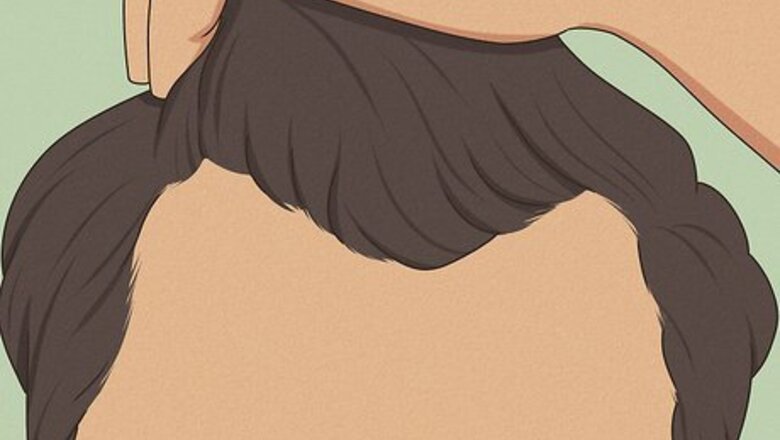
views
X
Trustworthy Source
Cleveland Clinic
Educational website from one of the world's leading hospitals
Go to source
If you’re unsure whether you’re balding or just growing into your adult hairline, you’re in the right place. In this article, we’ll go over the signs and causes of balding at 20, plus explain all of the treatments available to help your hair grow the best it can (and potentially stop or reverse your hair loss!).
Signs of Early Balding
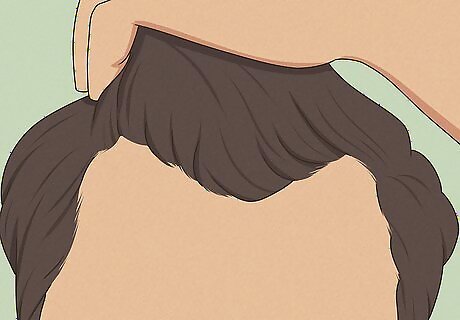
Thinning temples Your temples are the area of skin between your ears and forehead. In the early stages of balding, you may start to see some hair loss or thinning in this area. If and as the hair loss progresses, the thinning may “meet” a thin patch forming at your crown (the top of your head).
Receding hairline A little bit of hairline recession is a normal sign of aging. However, if your hairline starts to recede around your temples, it can be a sign of hair loss or balding. Check to see if your hairline progresses into a “U” or “M” shape over time as the temple portions recede farther.
Thinning on the top of your head (crown) Another common area where men may first notice hair loss is around the highest point of the head called the crown (or sometimes the vertex). Thinning here will be gradual and look like a stereotypical “bald spot.” This is the most common type of hair loss (for men and women) and typically affects people more severely as they age. Depending on the cause of the hair loss and other factors (like genetics or a specific health condition), you may see thinning across your whole head all at once rather than just at the crown or temples. This is more common in women than men, though.
Widening part You may notice that more and more scalp gradually becomes visible where you typically part your hair. This is a sign of hair thinning or loss in that area and may indicate your hair is thinning on other parts of your scalp as well. This is typically one of the first noticeable signs of balding in women.
Losing clumps or many strands of hair at once It’s normal to lose 50–100 hairs from your head a day. However, if you’re noticing large clumps come out when you’re combing your hair or showering, or waking up with excessive strands of hair on your pillow in the morning, you may be experiencing accelerated hair loss. Often, this type of hair loss is caused by an underlying condition (like stress or an illness). Once the condition is addressed, hair restoration is likely.
Losing hair all over your body You may notice patchy hair loss in your eyebrows, beard, or other places on your body in addition to your head. This may be caused by a condition or medical treatment, like chemotherapy, and is likely to subside once the condition is treated or stopped.
Sunburn on your scalp You may notice irritation or full sunburns on your scalp due to thinning hair or balding spots exposing more of your skin to the sun’s UV light. This can be a sign of hair loss if you never used to experience this. Tip: Prevent scalp sunburn with powdered sunscreen if you have long or thick hair, or with regular liquid sunscreen for short and thin hair. Use at least SPF 30.
Inability to style your hair like normal You may notice that your hair doesn’t hold its shape or volume as well as it used to. This could be a sign of hair loss or thinning, which leads to your hair sitting differently on top of your head.
Noticeable difference compared to old photos Take a look at an old snapshot of yourself—does your hair look thinner and less full than a few years ago? Is your hairline a different shape? While hair loss is often gradual and hard to notice when it first starts happening, comparing pictures is a good way to assess your overall hair health at a glance.
What causes balding at age 20?
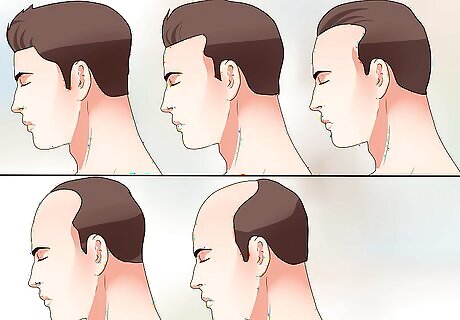
The most common cause of early balding is male pattern baldness. Male pattern baldness, or androgenic alopecia, is very common and can affect anyone assigned male at birth (AMAB). About two-thirds of men will have male pattern baldness and experience some degree of hair loss in their life, with increased loss as they age. The early stages of balding typically begin in your 30s, but it can start as early as your late teens. The exact cause of androgenic alopecia is believed to be related to increasing levels of the hormone dihydrotestosterone (DHT) as you age. Genetics also play a role. If your maternal grandfather (your mother’s father) has male pattern baldness, you’ll likely develop it as well. If your father is bald, your chances of getting male pattern baldness are twice as high. Other types of alopecia that may be to blame include alopecia areata (small balding circles) and cicatricial alopecia (scarring and permanent damage to your hair follicles).
Other underlying conditions or genetics can cause early balding, too. While androgenic alopecia is responsible for most hair loss in your 20s, there are a variety of other family, environmental, and medical conditions that may be to blame, too. These conditions include things like: Your family genetics and age: If you have relatives with thinning or balding hair, you’re more likely to experience hair loss as well (especially as you grow older). Certain medications or supplements: Hair loss may be a side effect of certain drugs, particularly those used to treat cancer, arthritis, depression, heart disease, gout, and/or high blood pressure. Radiation therapy: Radiation, like that used to target cancerous tumors, can cause balding if it's focused on or near the head. Hormonal changes: Thyroid conditions may be to blame if there’s no apparent underlying cause for the hair loss. Other hormone-altering events like pregnancy, childbirth, or menopause may also be the culprit for female balding. Infection: An infection of or on your scalp (like tinea capitis, a fungal infection) can cause hair loss and potentially scarring, which prevents the regrowth of hair once the infection clears up. Nutritional deficiencies: Rapid weight loss or a deficiency in protein, iron, or certain vitamins may cause hair loss (although having a true deficiency is rare). Stress: Chronic stress may cause gradual hair loss, while acute stress or trauma may lead to hair loss several months after the initial physical or emotional shock. This type of hair loss is usually reversible and known medically as telogen effluvium. Damaging hairstyles: Excessive styling or styles that pull your hair very tight may lead to a type of hair loss called traction alopecia. Using excessive hot oils or styling instruments can also damage your hair and cause it to fall out.
Is it normal to start balding at 20?
Around 25% of men with male pattern baldness will see signs of hair loss before age 21. In other words, beginning to bald at age 20 is not as uncommon as you might think! While it may be a struggle emotionally or socially to start losing your hair at a young age, remember that balding does not affect your physical health in any other way. As you get older, more and more men will begin to show signs of hair loss as well. About half of all men or people assigned male at birth will experience some hair loss by age 50, and 70% of men will see hair loss later in life. All in all, about two-thirds of men will experience some form of hair loss during their lives. You’re definitely not alone!
Treatments for Thinning & Balding Hair

Minoxidil (Rogaine) Minoxidil is an over-the-counter topical treatment you apply directly to your scalp to stimulate hair growth. It’s typically the first treatment that most men try once they notice hair loss symptoms. Possible side effects include headaches, scalp irritation, or irregular hair growth. Treatments like Minoxidil must be used consistently to see lasting results. If you stop using it, your hair loss will likely resume.
Prescription medications The most common hair loss medication is finasteride, a 5-alpha reductase inhibitor that stimulates hair growth. Another possibility includes dutasteride, which may be more effective than finasteride but hasn’t been as thoroughly tested for long-term use. Spironolactone (oral or topical) is another option sometimes used for androgenic alopecia in both men and women.
Topical retinoids A retinoid is a generic term for a skin product whose chemical structure is based on vitamin A. Some retinoids have been found to increase the rate of hair growth and prolong the hair life cycle, especially when used with minoxidil. However, more study is needed to fully understand how they affect hair growth.
Laser light therapy With these treatments, certain wavelengths of light are administered to the scalp with a special cap or helmet. The light is believed to stimulate the hair follicles and encourage hair growth. There are some laser devices available to buy and use at home. If you try these, make sure to buy one that’s labeled as “FDA cleared,” meaning the FDA views it as a safe treatment (however, the requirements for being fully “FDA approved” are much higher).
Platelet-rich plasma With this treatment, blood is removed from your body and processed to remove red blood cells. This new plasma is then injected into your scalp to stimulate hair growth. Side effects can include scalp pain, dizziness, vomiting, and nausea. The effectiveness of this treatment is controversial, with some medical organizations recommending not to try this treatment until further study is completed.
Stem cell therapy There are a variety of experimental methods for using your body’s own stem cells (“blank” cells with the potential to grow into a different, more specialized cell) to reactivate dead or damaged hair follicles and increase hair growth. The research is very promising, but more is needed to become FDA-approved.
Hair transplant This surgical option involves grafting skin from areas of your body with healthy hair growth and moving them to areas of your scalp that are bald or thinning. Young men under the age of 25 are often eligible for this treatment, and it’s typically suggested only after less invasive methods have been tried.
Follicular unit extraction (FUE) This more modern surgical method involves removing individual healthy hair follicles and transplanting them to the balding or thinning areas of your head. It’s considered a type of hair transplant. Like a traditional hair transplant, this option usually isn’t considered until other topical treatments or medications have been tried.
Healthy lifestyle While lifestyle changes likely aren’t enough to overcome male pattern balding, certain habits can slow down hair loss and protect your existing hair. In particular: Consume at least 4–60 grams of protein per day, especially if you’re vegan or vegetarian. Take a daily multivitamin and eat a varied, balanced diet to ensure you’re getting adequate doses of vitamins A, B, C, D, E, zinc, and iron. Lower your stress to counter stress-related hair loss through activities like meditating, exercise, or journaling. Quit or cut back on smoking nicotine and drinking alcohol.
Disguising Thinning Hair
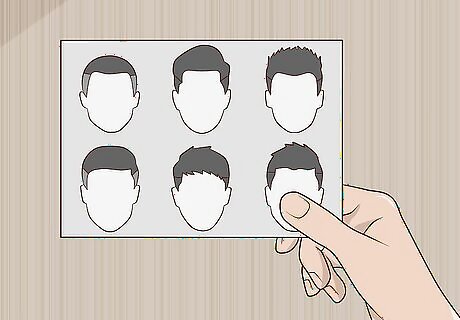
Find a hairstyle that camouflages thin spots and makes you feel confident. Fortunately, there are a ton of trendy styles that can make your hair seem thicker or fuller while hiding thin patches or a receding hairline. Ask your stylist about looks like: A buzz cut. Cut all your hair very short (start with a #3 clipper) to hide thin or bald patches on top as well as a receding hairline. Try buzzing the back and sides one grade shorter to give your head some shape. This is also an easy one to do and maintain yourself! A crew cut. Cut the sides short and blend them into a bit of length on top. The shorter sides will balance out any thinning spots on top. Slicked back hair. Keep your sides short and your top long, then slick back all of your top hair to hide thin hair or bald spots. Other great and bold looks include a pompadour, a fauxhawk, or just shaving it all off!
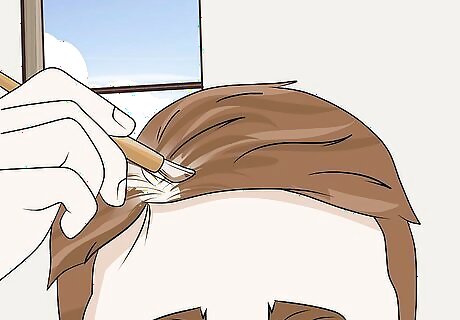
Use powdered hair loss concealer to blend your scalp skin into your hair. Professional hair stylist Janet Miranda recommends using colored powder to cover thinning areas: “It comes in a spray bottle form, so you can just spray that into the areas that are balding. It shoots color into that balding spot and covers it [since] it looks like it’s still your natural hair.” Miranda adds, “They come in different tones [for] whatever color you are.”


















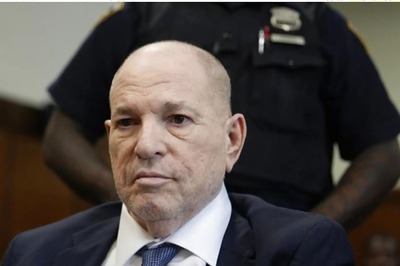

Comments
0 comment